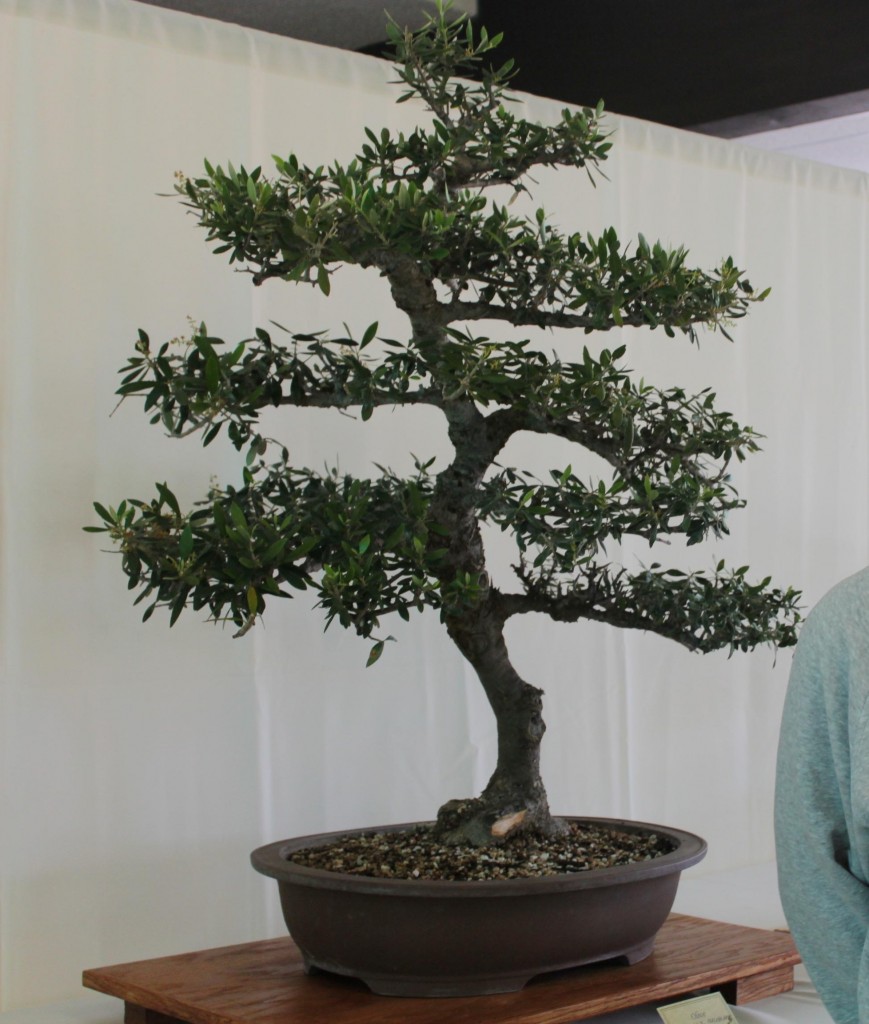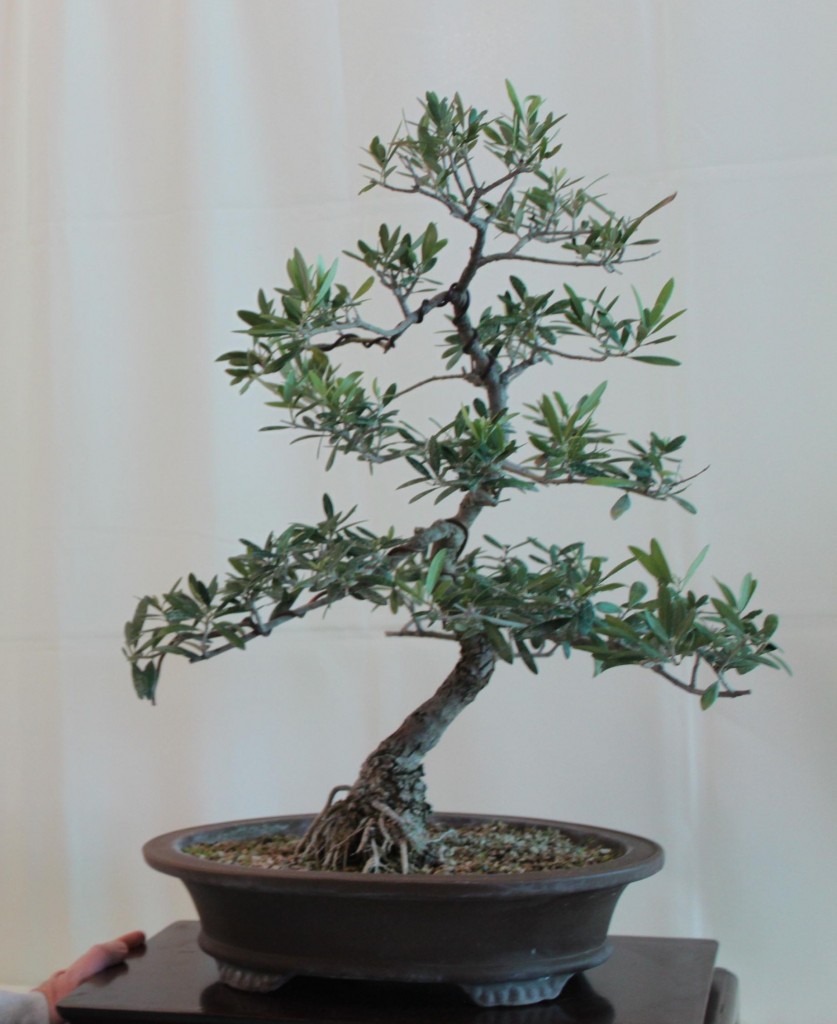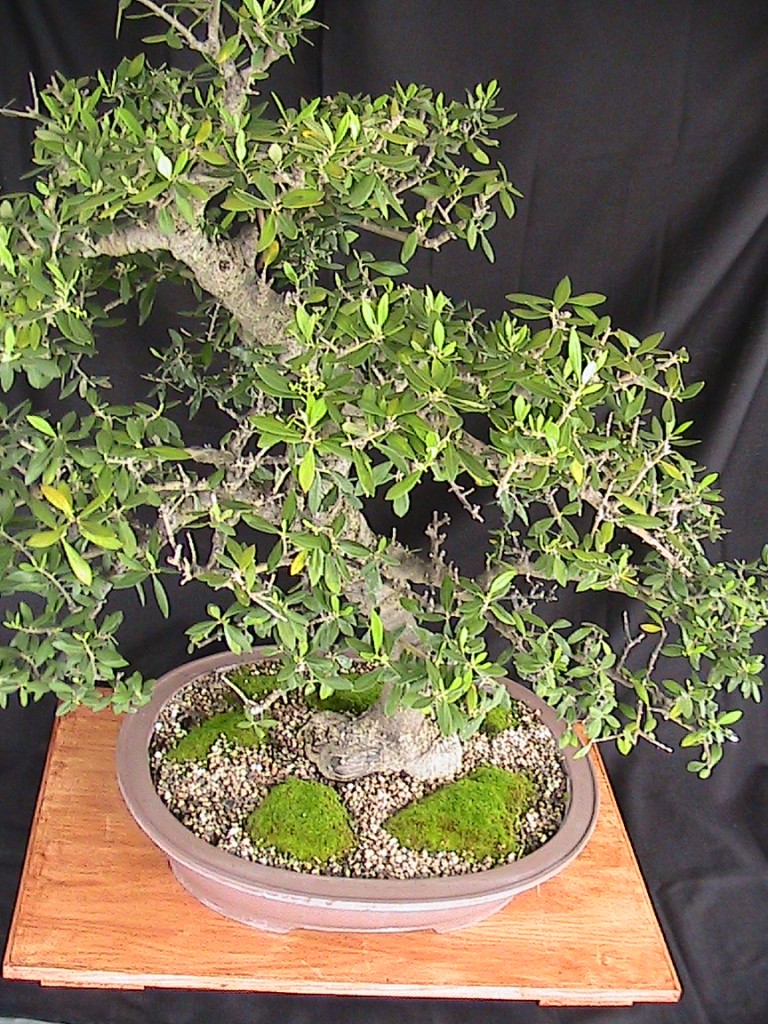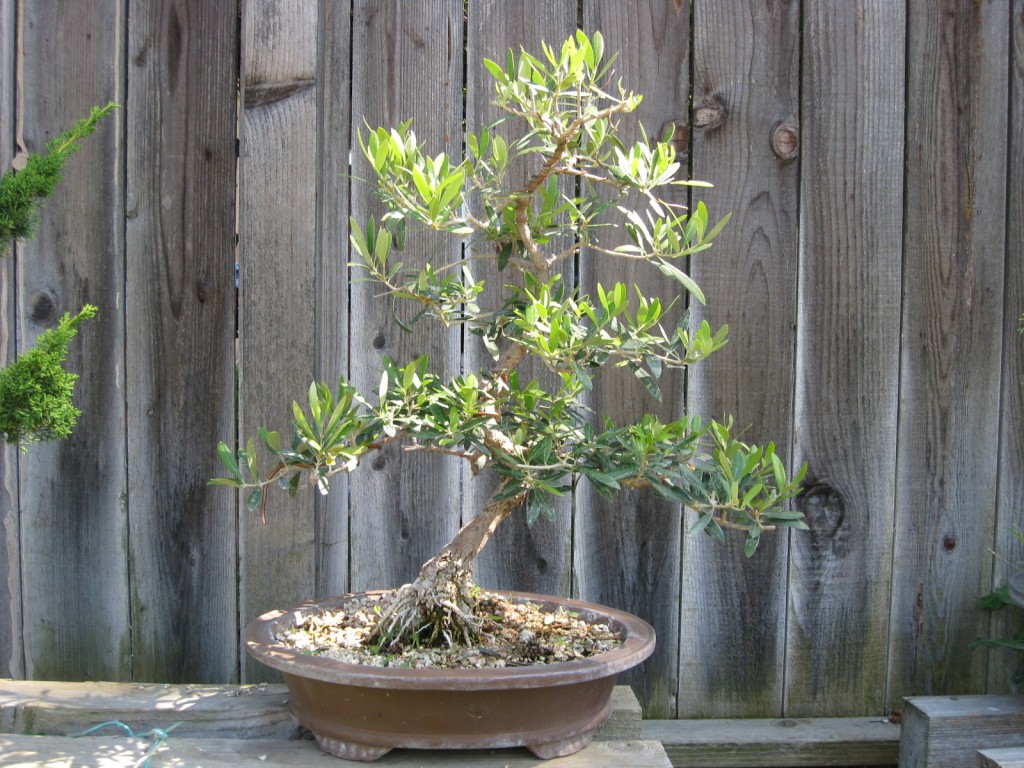Olive Bonsai
Olive Bonsai
Few broadleaf trees can equal the Olive as material for bonsai. The small leaves and massive deadwood trunks of the Mediterranean Olive (Olea Europa) make it a natural for bonsai – yet the Olive is one tree that was never used for bonsai by the Japanese or the Chinese.
Background:
The Olive is a smallish evergreen native to the areas around the Mediterranean Sea. In the wild it rarely exceeds fifty feet in height. The European Olive features small leaves and heavy wood, and has been cultivated by humans since ancient times for its fruit. It is extensively mentioned in ancient literature. The fruit of the Olive tree is edible, and the oil from pressed olives is used extensively in cooking, and was used in ancient times as a lubricant, and as a fuel oil for lamps. The Spanish brought the Olive tree to the temperate areas of Mexico and to California, where it became a transplanted native tree – it grows wild in some places. In addition to being grown in orchards, the Olive tree is used extensively in landscaping in Mediterranean climates.
The first Olive bonsai were created in California in the 1950’s, and the first mention of them in the media is in the Sunset Bonsai book, either the first edition (1965) or the second edition (1976). Since then, the Olive has been a popular subject for bonsai in California and in Europe, with old stumps being dug up from landscapes and orchards, and massive specimens being collected from the wild in Europe.
Where to Get One:
Olive trees are stocked by most nurseries in California and Southern Europe. However, if you want an Olive with a massive trunk, you will either have to collect one or take a nursery specimen and thicken it in the ground. Olives propagate very easily from cuttings, so if you can find a mature tree, you can simply cut off some foliage and strike cuttings in mid spring. Watch for leaf size. Even within the single species of Olea Europa, leaf size can vary from specimen to specimen, with some trees having much smaller leaves than others. You may hear some bonsai enthusiasts talking about “small leaf Olive” but this is another species which is native to South Africa. South African Olive does have much smaller leaves, but it does not have the rough bark of Olea Europa, and generally does not bear fruit when cultivated as a bonsai.
What to Do With It After You Get It:
Try to get the biggest trunk you can. Olives throw suckers readily from the base, so if you have one that is too big, you can cut or carve it down. Olives are very amenable to trunk chops. However, they thicken up slowly, so if you are looking to grow on a small one, you may have a long wait. All is not lost, however. Olives make great patio trees, so putting one in a tub on a sunny patio will not only thicken the tree, it will also give you a nice patio decoration.
Soil and Potting:
Olives are not too particular about their soil, but they seem to like it on the sandy side. The author’s usual mix of potting soil, decomposed granite, pumice and sand works well, but Olives are more like Junipers than broadleaf trees in their soil preferences. A good mix would be about 30% decomposed granite, 30% pumice, 10% coarse sand, and 30% organic matter. If decomposed granite or pumice are not available, you can use turface or diatomite.
In terms of the pot, you can use a large one for growth. For bonsai potting and root pruning, there is not much to worry about. Olives respond well to root pruning, and they do not mind being potbound.
Siting and Watering:
Olives are most definitely outdoor trees. The Olive is one tree that will thank you for putting it in the brightest, sunniest part of your yard. Olives love the sun and they love hot weather, but make sure your Olive has plenty of water. Dry soil will not kill an Olive, at least not for a while, but insufficient moisture will sure stop an Olive from growing. While Olives have some shade tolerance, placing one in the shade will likely result in an increase in leaf size.
Pruning and Shaping:
Olive can be shaped into just about any bonsai style, except formal upright. While it is possible to create a formal upright Olive bonsai, this style is not natural for the tree. However, Olive works in just about any other style, from broom, to the various upright and group styles, to a full cascade. Just about every informal style is appropriate for the Olive because it is such a versatile tree and it is capable of surviving in a variety of hostile environments. You should only prune an Olive during warm weather, while they are in active growth. If you prune one in winter or early spring, or during a cold spell, the tree will not issue growth, and it may die back. You are generally better off shaping an Olive by clip and grow, and wiring should only be used on young trees or young growth. Healthy Olives will send out a profusion of long shoots, which can be cut back to one or two pairs of leaves. Do not cut back flush with the leaf node; Olives sometimes die back instead of budding when pruned, especially in hot weather.
Young branches can be shaped by wiring, but be careful when working with older, thicker branches. Old Olive wood becomes brittle, and will snap easily if you try to bend it, so move older Olive branches with great care.
Closing Remarks:
With its rough bark and tiny green leaves, the Olive always presents an impressive image as a bonsai.




